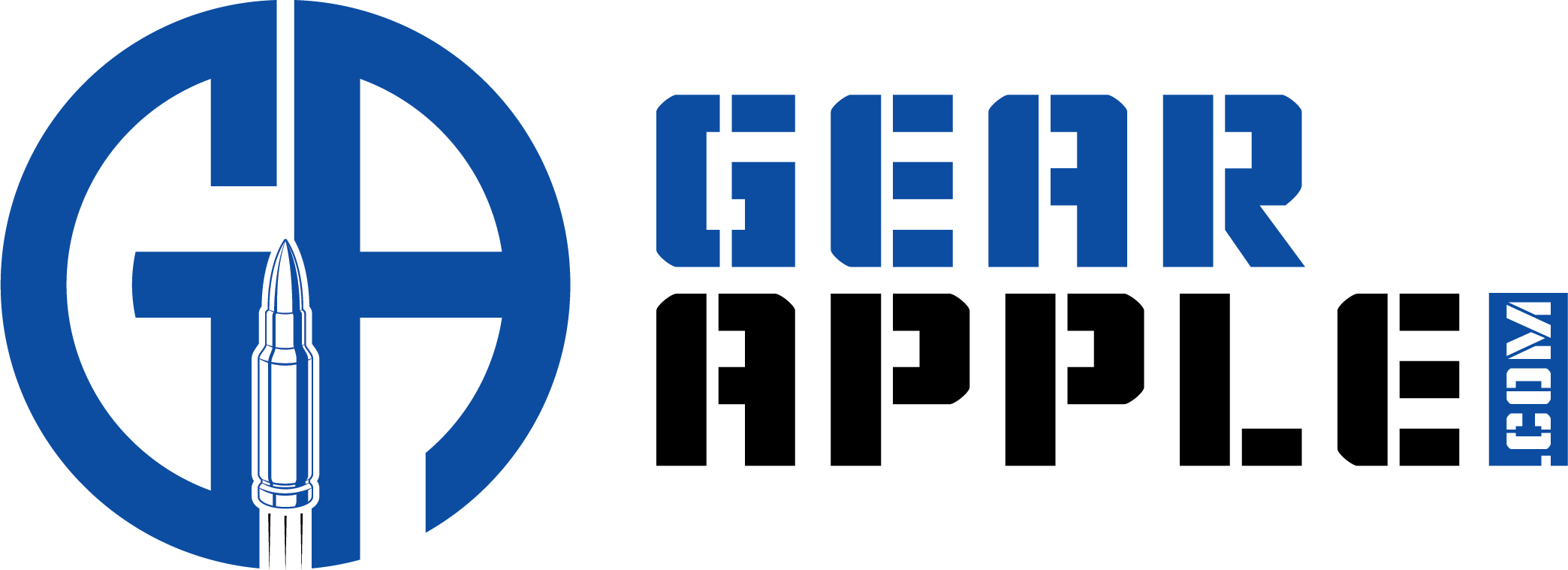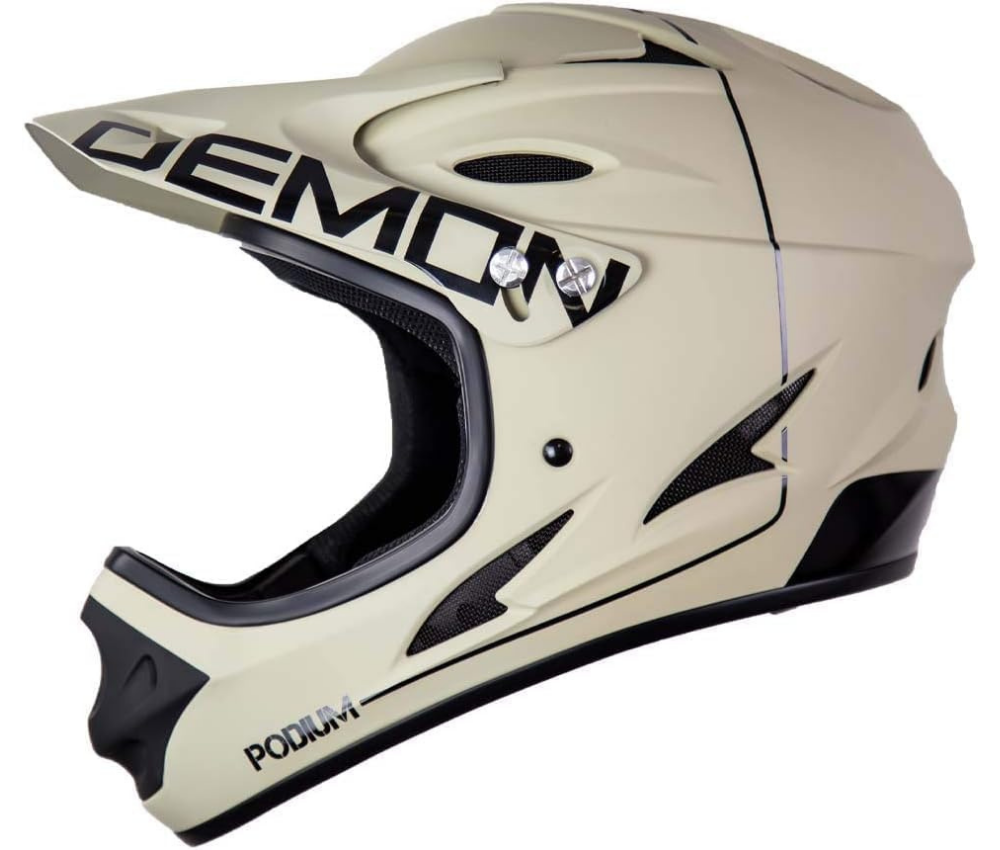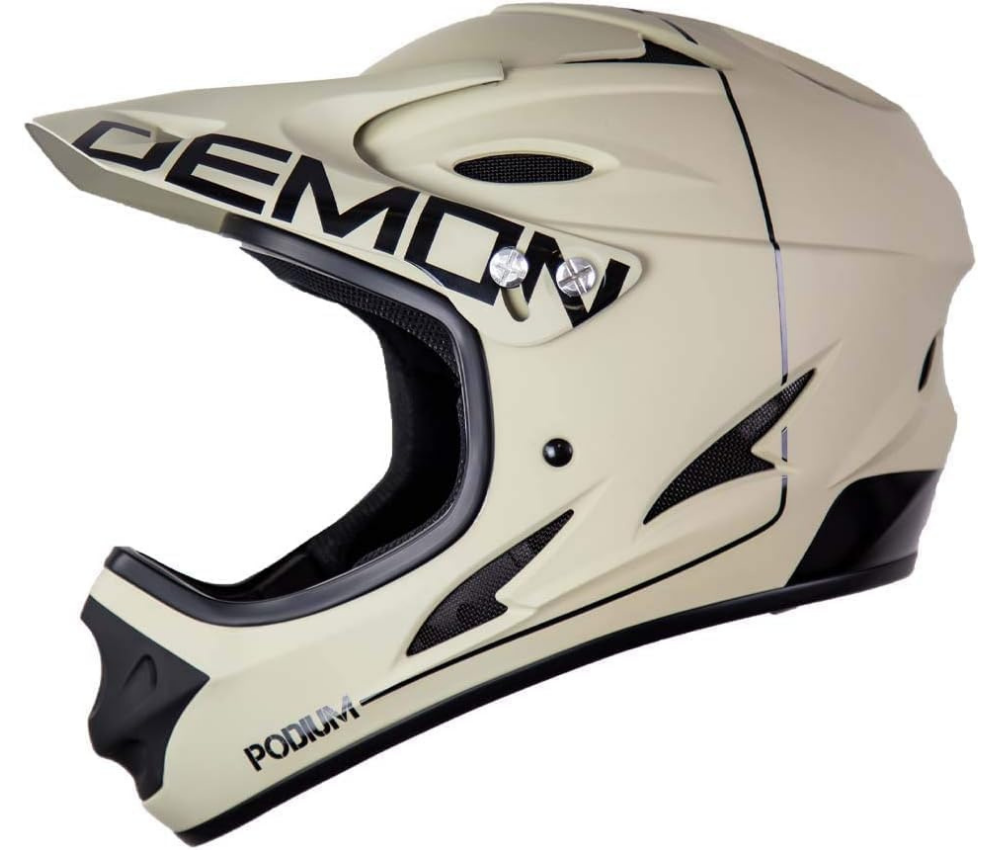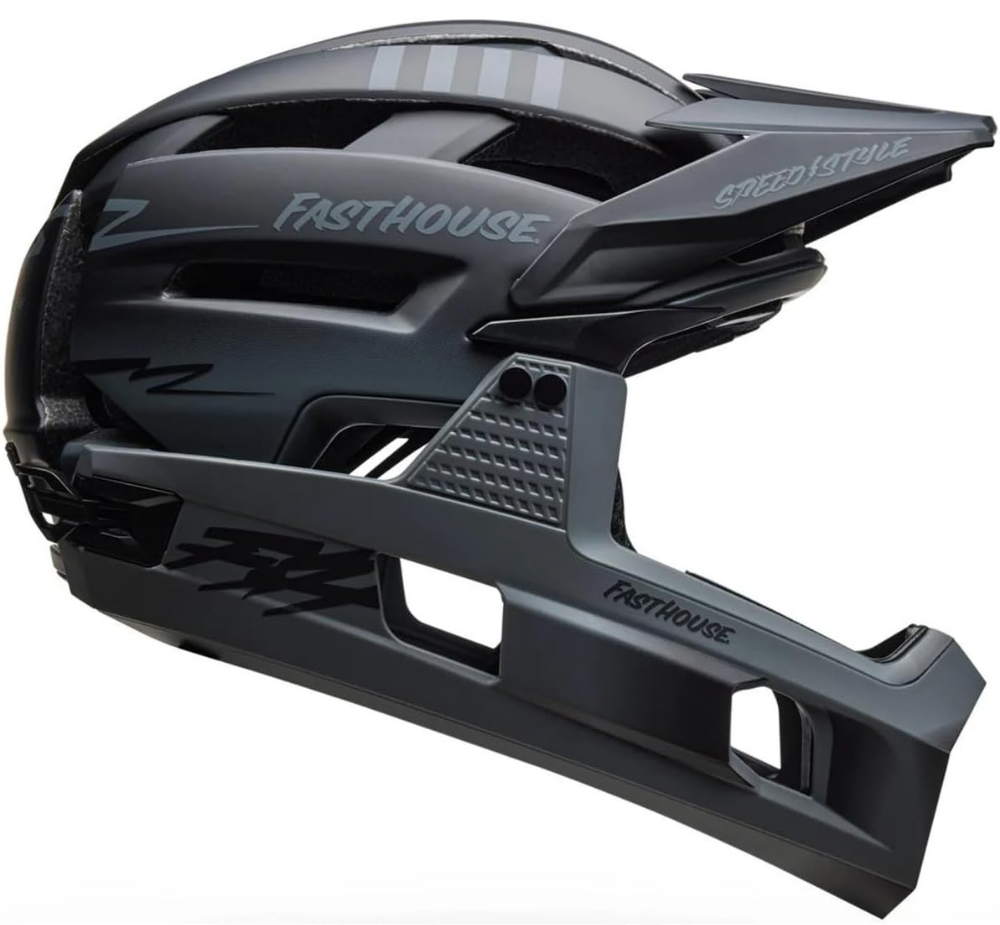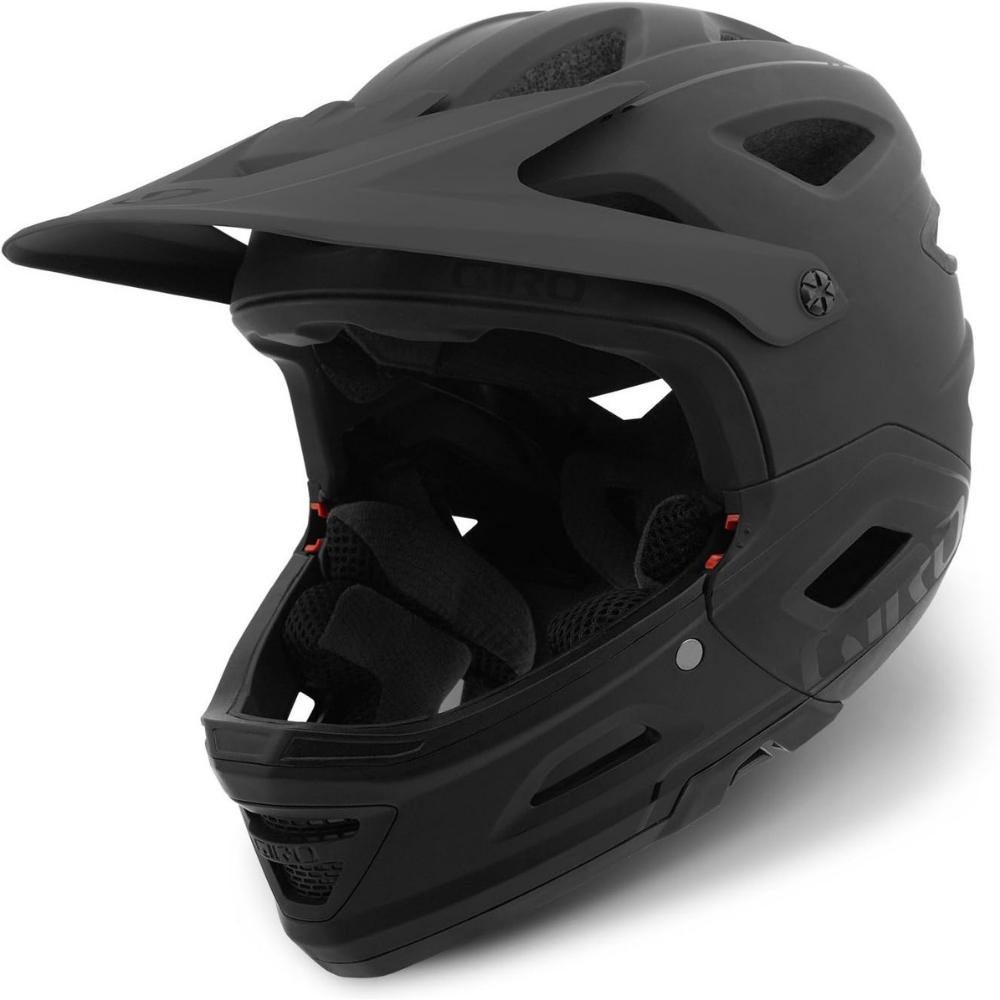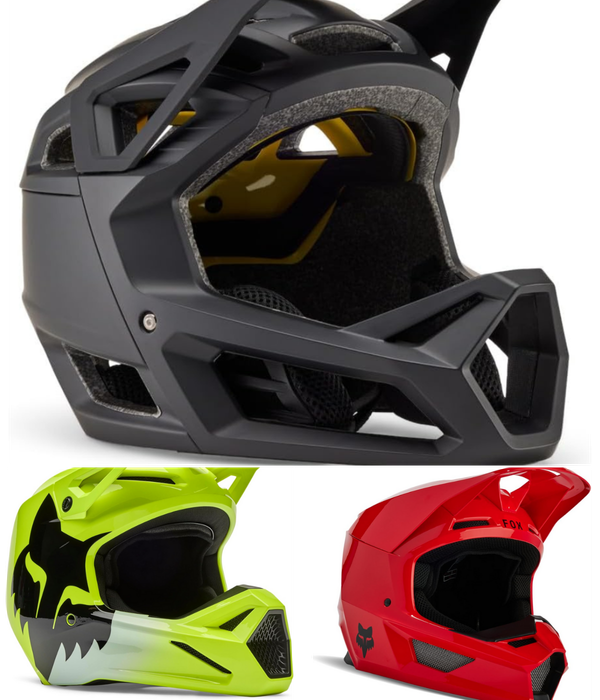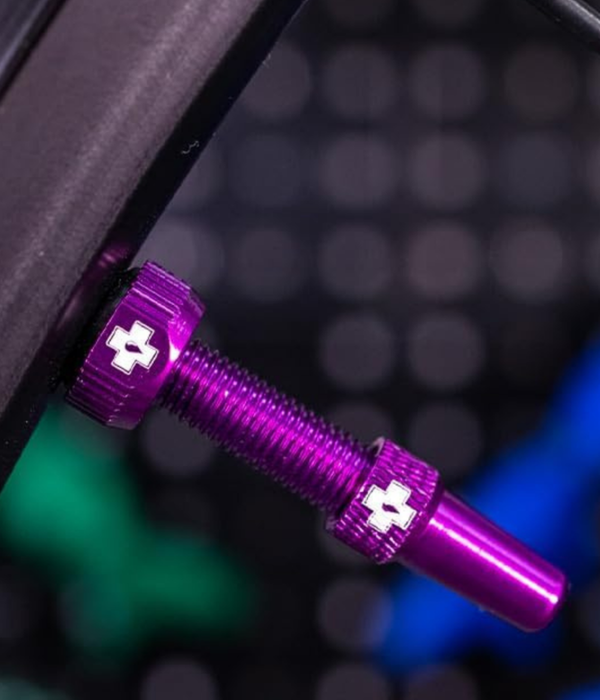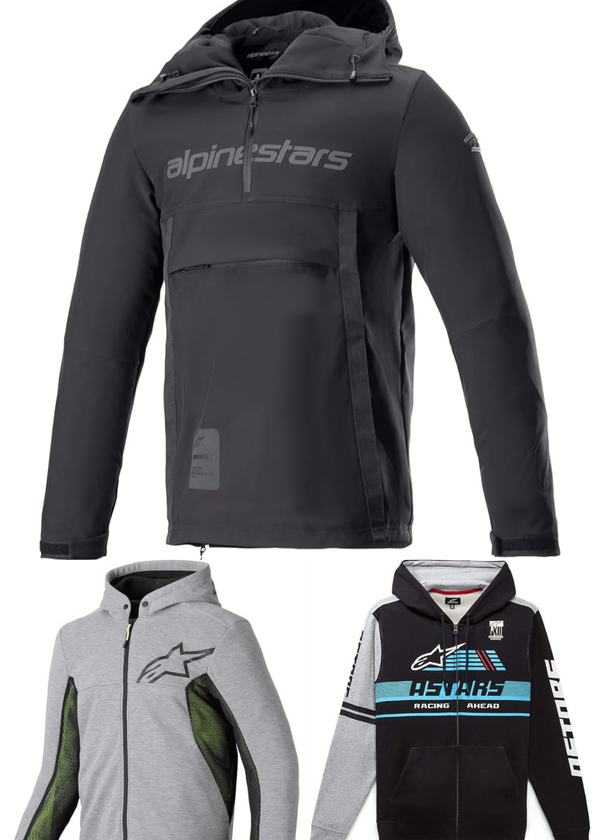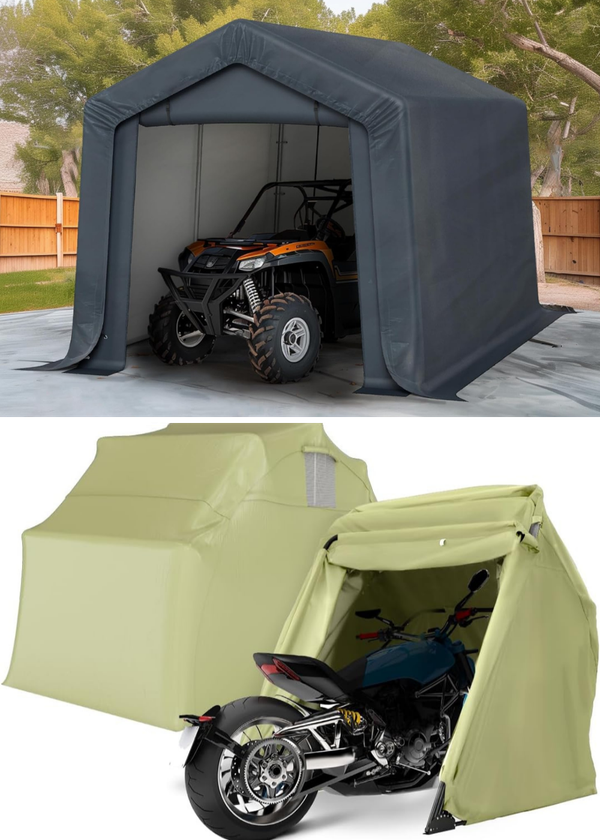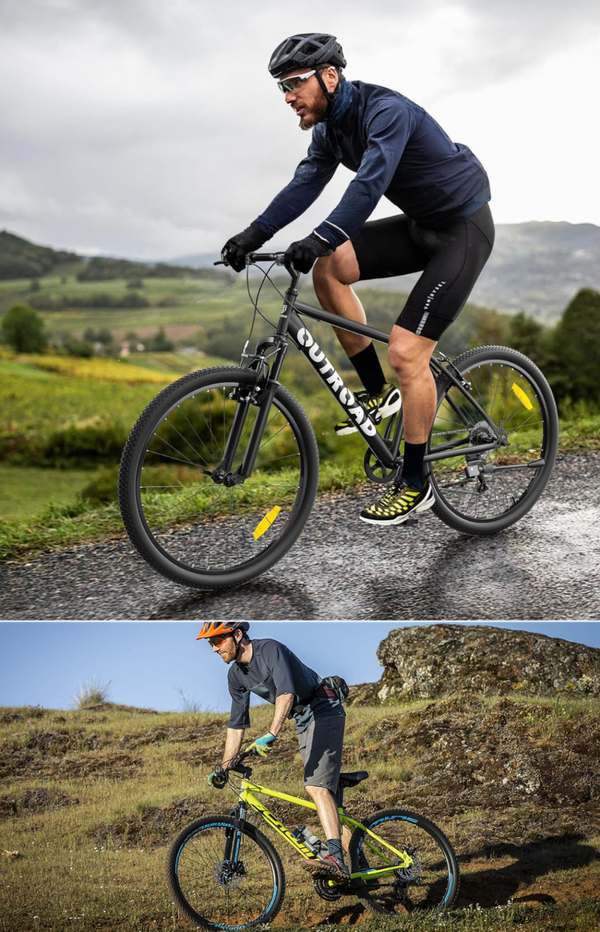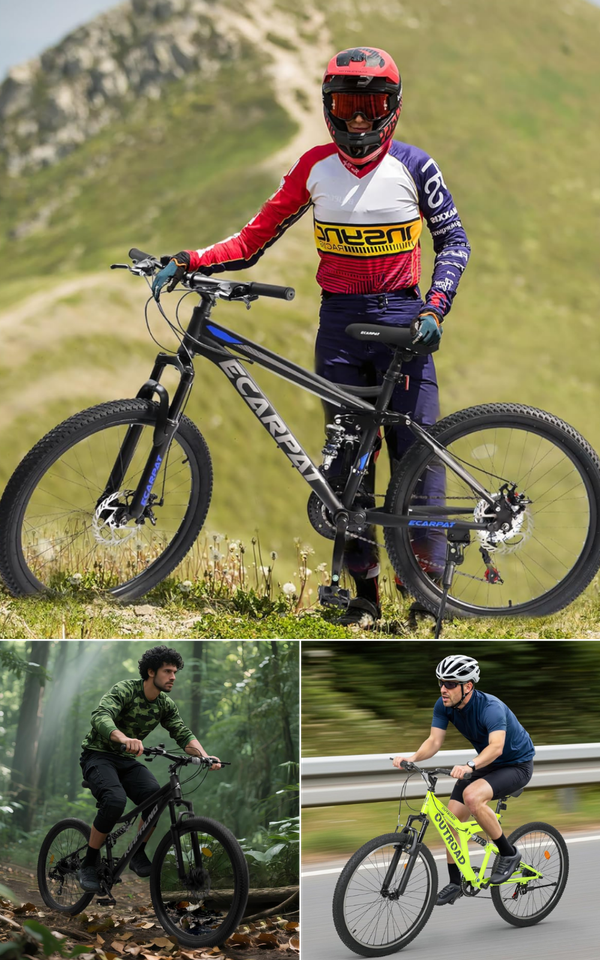When it comes to aggressive trail riding, enduro racing, or downhill descents, your gear is only as good as your helmet. A full face mountain bike helmet offers the highest level of protection—covering your head, jaw, and face—so you can ride harder and descend faster with confidence.
🛡️ What Is a Full Face Mountain Bike Helmet?
A full face MTB helmet features a chin guard and extended coverage to protect your face and jaw, in addition to your skull. Full face helmets are designed to fit a variety of heads, ensuring comfort and safety for different head shapes and sizes. Unlike traditional half-shell helmets, full face models are built for high-speed impacts and technical terrain, often with features designed for ventilation, comfort, and certified safety standards. Helmets vary in design, features, and protection levels to suit different riding styles and preferences.
🔥 Why Choose a Full Face Helmet?
✅ Maximum Protection
Ideal for enduro, downhill (DH), and freeride mountain biking, where crashes are more severe and terrain is more extreme. Many helmets in this category come with DH certification, ensuring they meet the highest safety standards for downhill riding.
Durability is also crucial in full face helmets, as they need to withstand repeated impacts and rough use.
✅ Jaw and Facial Safety
Standard helmets protect your skull, but a full face helmet guards your chin, jaw, and teeth, which are critical in high-speed falls.
✅ Confidence Boost
Knowing your face is protected with a confidence-inspiring fit and coverage helps you ride more aggressively and tackle more technical terrain.
✅ Versatility with Convertible Options
Some helmets feature removable chin bars, allowing riders to switch between open and full-face configurations mid-ride. Convertible helmets let riders easily change between open-face and full face mode, providing flexibility for different trail conditions. This is especially beneficial during climbing and long climbs, as the chin bar can be removed for increased ventilation and comfort. Some helmets are designed to be lighter and more ventilated, making them ideal for both climbs and descents.
🔧 Key Features to Look For
- Safety Certification (ASTM F1952 or DH-certified for downhill use)
- MIPS or similar rotational impact protection
- Ventilation ports to keep airflow high during long rides
- Well-ventilated designs for maximum airflow and cooling
- Lightweight construction (especially for enduro)
- Lighter weight options for reduced fatigue during long rides
- Adjustable visors for customizable fit and glare protection
- Removable padding or liners for hygiene and comfort
- Secure retention system (BOA dial, magnetic buckle, or ratchet)
- Durability for long-term use and protection
🏅 Safety Standards and Ratings: What to Look For
When it comes to choosing the right mountain bike helmet, understanding safety standards and ratings is essential for every rider. With so many mountain bike helmets on the market—ranging from full face helmets to convertible models—knowing what each certification means can help you find the best protection for your style of mountain biking.
The most recognized safety standards for mtb helmets are the European EN 1078 CE and the American ASTM F1952. These certifications focus on how well a helmet can absorb linear impact forces, which is crucial for protecting your head during a crash. However, modern research shows that rotational forces—the twisting motion your head can experience in a fall—can also lead to serious injuries like concussions. That’s why many of today’s top mountain bike helmets include advanced safety features such as MIPS (Multi-directional Impact Protection System), which is designed to reduce these rotational forces and provide added protection.
To make sure you’re getting the safest bike helmet for your needs, look for models that have been tested by independent organizations like Virginia Tech or Certimoov. These institutes go beyond basic certifications, offering detailed ratings on how different helmets perform in real-world crash scenarios. Whether you’re searching for a downhill helmet with maximum coverage, a versatile full face helmet for enduro, or the lightest helmet for long trail rides, these ratings can help you make an informed choice.
Remember, the right helmet isn’t just about safety certifications—it’s also about finding a perfect fit and ensuring good ventilation for comfort on every ride. With a wide range of models available, from open face helmets to full face and convertible helmets, you can fine-tune your choice to match your specific needs, riding style, and the level of protection you want. Prioritizing both safety features and comfort means you’ll be ready to tackle any trail with confidence, knowing your protective gear is up to the challenge.
🎯 Who Needs a Full Face MTB Helmet?
In the sport of mountain biking, full face helmets are essential for riders seeking maximum protection.
- Downhill riders tackling bike parks and black diamond trails
- Enduro racers needing DH protection on timed descents
- Trail riders seeking convertible options for versatile terrain
- Younger or beginner riders building confidence on steeper terrain
These helmets are specifically designed for use with mountain bikes across various disciplines.
🧼 Helmet Care Tips
- Clean padding regularly to avoid odor buildup
- Inspect for cracks or impacts after crashes—replace if damaged
- Store in a cool, dry place away from sunlight
- Avoid dropping or tossing—helmet integrity matters
Demon United Podium Full Face Bike Helmet- 13 Vents- Lightweight- Breathable
- The Podium full-face helmet is one of our prize pieces of protective gear. We put in our time and research and came up with the coolest (really, it will keep your head nice and cool), most stylish helmet. New design and graphics, tough materials, protection ... you can't go wrong with this full-face helmet.
- Graphics and design are inspired by our Demon Team riders. Fully adjustable visor with aluminum side visor screws. Tough outer shell.
- EPS foam liner conforms to your shape for a superior fit. Removable, washable helmet liner. 13 convenient air flow vents.
- The Podium full-face helmet weighs in at only 2lbs. 2oz.
BELL Super Air R MIPS Adult Mountain Bike Helmet
- FUSION POLYCARBONATE SHELL AND PROGRESSIVE LAYERING - A process pioneered by Bell bonds the helmet's outer shell to the EPS foam liner to create a sturdier helmet. The process of engineering a helmet liner with variable EPS foam densities to better manage the transfer of energies after some impacts.
- FLEX SPHERICAL + MIPS - Comprehensive energy management. Flex spherical enhances our ability to address high-speed impacts, low-speed impacts, as well as rotational impacts. Think of it as comprehensive protection, with the added bonus of being able to design better helmet ventilation.
- X-STATIC PADDING AND WRAPAROUND CHIN BAR - Quick-drying materials, woven with real silver fibers. A removable protective chin bar, designed for trail riding adaptability -- no tools required. Warning: all chin bars have limits, and serious injury or death can occur. Read the owner's manual carefully before using your helmet.
- OVERBROW VENTILATION, GOGGLEGUIDE ADJUSTABLE VISOR SYSTEM, AND INTEGRATED BREAKAWAY CAMERA MOUNT - Overbrow Ventilation features intake ports on the brow of the helmet to usher in cool air and push it through the air-channel matrix for full ventilation. Adaptable visor system accommodates both goggles and glasses and works with or without the visor attached. Seamless camera mount, requiring no zip ties or tape, is engineered to break away upon impact to reduce the risk of injury.
Giro Switchblade MIPS
- Removable chinbar
- P.O.V. Plus visor
- Spare visor with camera mount Hydrophilic x -Static padding
- In-mold construction
- 20 vents with internal channeling
🧩 FAQs – Full Face Mountain Bike Helmets
Who should wear a full face mountain bike helmet?
Full face helmets are ideal for downhill, enduro, freeride, and bike park riders—or anyone tackling high-speed, technical terrain where facial protection is critical.
Are full face MTB helmets comfortable for long rides?
Modern full face helmets are designed with ventilation, lightweight materials, and ergonomic fit, making them comfortable even on longer rides—especially convertible models.
What safety certifications should I look for?
Look for helmets certified to ASTM F1952 for downhill use and CPSC or EN 1078 for general cycling. Many also include MIPS for added rotational impact protection.
What is a convertible full face helmet?
A convertible helmet features a removable chin bar, allowing riders to switch between a traditional open-face helmet and full face protection as needed.
Can I use a motocross helmet for mountain biking?
While motocross helmets offer protection, they’re typically heavier, hotter, and not optimized for MTB impact dynamics. It’s better to use MTB-specific full face helmets for proper fit and safety.
How are full face mountain bike helmets tested for performance and comfort?
Testers wore the helmets over several months in real-world riding conditions, including trail laps, bike parks, and races. This extended testing period helps assess comfort, fit, and durability based on actual riding experiences.
🔚 Final Thoughts
A full face mountain bike helmet is a game-changer for serious riders. Whether you’re bombing a downhill course, racing an enduro stage, or pushing your limits on steep descents, it offers the protection and confidence you need to ride at your peak. Don’t compromise when it comes to your face and head—gear up with a full face and ride like you mean it. A versatile full face helmet has safety features with a heavily padded interior.
